The Enforcement Directorate (ED) in India used to be a sleepy corner of India’s Finance Ministry and was not known to majority of Indians until recently. Mandated to investigate money-laundering and foreign-exchange violations, it rarely made headlines under the previous governments, including during the coalition led by the Congress party, which ruled from 2004 to 2014. Its record on money-laundering—a big problem in India—was particularly lackluster: it conducted only 112 raids and failed to achieve a single conviction.
Under Narendra Modi, the ED has become one of India’s most feared agencies. Since he became prime minister in 2014 it has conducted more than 3,000 money-laundering raids and secured 54 convictions. Most controversially, especially in the run-up to a general election due by May, it has targeted dozens of Opposition politicians, including at least five party leaders—while largely steering clear of bigwigs in Modi’s Bharatiya Janata Party (BJP).
In March 2023, The Union government introduced changes to rules on money laundering which significantly widen the net under which the Enforcement Directorate (ED) can access the financial history of individuals and organisations. This has implications on all those the powerful central agency can now act against.
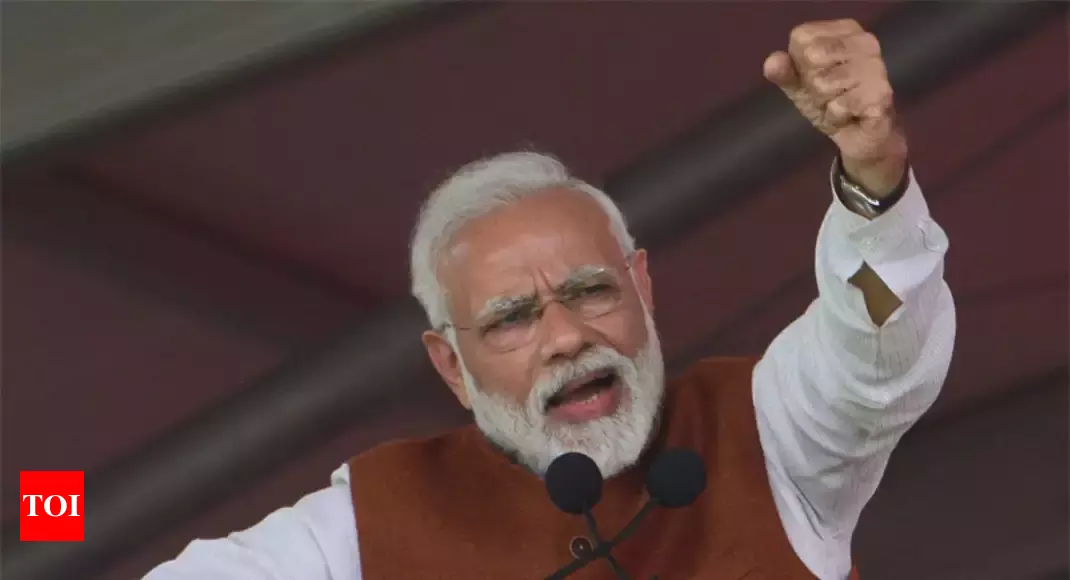 The recent offensives against the Opposition Party leaders by the Central Bureau of Investigation (CBI) and the Enforcement Directorate (ED) may owe partly to the BJP’s objective of winning the 2024 general election with a much bigger margin, which requires it to “discredit and disunite” its opponents, analysts across India say.
The recent offensives against the Opposition Party leaders by the Central Bureau of Investigation (CBI) and the Enforcement Directorate (ED) may owe partly to the BJP’s objective of winning the 2024 general election with a much bigger margin, which requires it to “discredit and disunite” its opponents, analysts across India say.
Indian investigators have raided multiple premises linked with a prominent rights activist in the national capital – a move that Prime Minister Narendra Modi’s critics say is part of a pattern that has seen his government targeting political opponents two months before general elections.
Congress Party leader and a former Under-Secretary-General for Communications and Public Information at the United Nations, Shashi Tharoor crticized the Bharatiya Janata Party (BJP) government in India, accusing it of misusing central agencies to target political opponents. Tharoor expressed concern about the state of central agencies and independent institutions in the country under what he termed as “electoral autocracy.”
Highlighting that the ruling government is misusing central agencies for political benefits, Tharoor said, “Now we are seeing the government being quite shameless in misusing even those institutions that were meant to be independent like the ED, CBI, and law enforcement bodies, which were meant to chase wrongdoers. They are now being unleashed selectively only on those whom the BJP deems to be its political opponent.”
The recent offensives against the Opposition Party leaders by the Central Bureau of Investigation (CBI) and the Enforcement Directorate (ED) may owe partly to the BJP’s objective of winning the 2024 general election with a much bigger margin, which requires it to “discredit and disunite” its opponents, analysts across India say.
The latest victim of this lopsided ED raids and arrests was on January 31st, 2024, when ED officers arrested Hemant Soren of the Congress Party and the chief minister of the eastern state of Jharkhand, on suspicion of money-laundering.
Soren is the fourth opposition chief minister to come under the scanner of the central investigation agency. Earlier,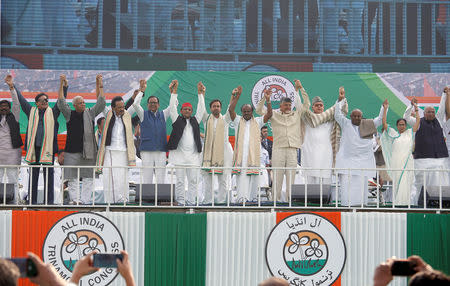 former Chhattisgarh chief minister Bhupesh Baghel and his associates were accused by the ED of being involved in an illegal online betting case. Baghel was named by the ED days ahead of the state’s assembly polls, which allowed the BJP to carry out a political campaign against the chief minister’s alleged corruption.
former Chhattisgarh chief minister Bhupesh Baghel and his associates were accused by the ED of being involved in an illegal online betting case. Baghel was named by the ED days ahead of the state’s assembly polls, which allowed the BJP to carry out a political campaign against the chief minister’s alleged corruption.
Rashtriya Janata Dal chief Lalu Prasad and his son and former deputy chief minister of Bihar Tejashwi Yadav have also been implicated in an alleged “land for jobs” scam. Lalu Prasad, who is severely ill, was called for questioning by the ED in a case that the CBI had first registered in May 2022 as a “land-for-jobs” scam. The CBI has named Lalu Prasad, his wife and former chief minister Rabri Devi, and their son Tejashwi Yadav and two daughters Misa Bharti and Hema Yadav, along with 12 others.
Other opposition leaders, including Tejashwi Yadav, the former deputy chief minister of neighbouring Bihar state, and Arvind Kejriwal, the chief minister of Delhi, have also been raided by federal agencies in recent months. Kejriwal’s deputy and one of his party’s parliamentarians are already in jail.
The ED raided the premises linked to AAP leaders in Delhi, prompting the party to accuse the Centre and the probe agency of intimidation. ED sources refuted the claims and added that the agency will take “legal recourse.”
Delhi chief minister and Aam Aadmi Party leader Arvind Kejriwal, too, has been served multiple notices by the ED in the excise policy case, in which his deputy Manish Sisodia and party MP Sanjay Singh have already been arrested. Satyendra Jain, another AAP minister in Delhi, has been in prison for around two years. Speculations are rife that Kejriwal may soon be arrested for refusing to present himself for questioning, as the chief minister has maintained that the questioning was politically motivated and a ploy to arrest him to prevent him from campaigning during the 2024 Lok Sabha polls.
In the central Chhattisgarh state, Chief Minister Bhupesh Baghel and his associates were picked up by the ED officials right before elections in November last year. The BJP accused them of multiple scams, including an illegal coal mining deal, and used the charges as a major plank to win the state polls.
Kerala CM Pinarayi Vijayan is now facing the heat from central agencies. In its efforts to portray a negative perception on the Communist leader in Ketrala, the CBI pushed for a March or April hearing on its plea, ahead of the national elections, challenging the discharge of Pinarayi in an over-25-year-old corruption case, but the Supreme Court listed it for a final hearing in May.
The case is about an allegation that as Kerala power minister, Pinarayi visited Canada as “a guest” of Lavalin and decided to grant it a contract for the renovation and modernisation of three hydroelectric projects in Idukki. The CBI alleges the decision resulted in a loss of Rs 86.25 crore to the Kerala State Electricity Board (KSEB). The trial court and the Kerala High Court have discharged Pinarayi in the case. The CBI says the high court’s decision to discharge Pinarayi was “not correct.”
Several other Opposition leaders are under the scanner of the central agencies, including a former Congress minister in Rajasthan Mahesh Joshi in the alleged Jal Jeevan Mission scam, associates of a few Congress leaders in Haryana and Himachal Pradesh in an alleged Haryana Urban Development Authority scam, and several local opposition leaders in southern states.
The Tamil Nadu government has moved the Madras High Court against the Enforcement Directorate (ED), opposing the agency’s recent summons to 10 district collectors in the state in connection with alleged irregularities in sand mining. The state’s petition on behalf of the collectors, in which it alleged constitutional overreach by the ED and a deliberate attempt to harass state officials, marks an escalation in the ongoing tussle between the state machinery and central agencies.
This can potentially be an election issue during the Lok Sabha polls, especially in Kerala, where the BJP is trying to expand its base and the CPI-M and the Congress have been the leading parties for decades.
The ED’s raids against the Opposition, however, have served the BJP readymade campaigns to target the Opposition and advance its own anti-corruption plank. Curiously, however, the ED hasn’t been able to substantiate many of its charges, with its conviction rate remaining at an abysmal low.
In yet another instance of abus eof power by the Modi government, a total of 141 federal lawmakers – 95 from the lower house (Lok Sabha) and 46 from the upper chamber (Rajya Sabha) – were suspended since December 14, 2023 for allegedly disrupting House proceedings, after they demanded a debate on a Parliament security breach.
Alleging that central agencies are silent in the BJP-ruled states, Aam Aadmi Party Rajya Sabha MP Raghav Chadha added that 95 per cent of the cases registered by the CBI and ED are against politicians of the Opposition.
Calling ED, I-T department and CBI as the “jawans” of the Modi government, Mallikarjun Kharge, President of the Congress Party said that the prime minister is afraid because of the Bharatiya Janata Party’s (BJP) defeat in Karnataka and Himachal Pradesh and therefore the agencies are trying to scare the Congress. He questioned why action is not taken against BJP leaders despite them having money and property. He said that the BJP has a “washing machine” through which tainted people in BJP are made clean. He said the agencies get active ahead of polls and target only Opposition leaders.
As the Lok Sabha elections approach, there are allegations that the BJP is using government agencies to intimidate and stifle opposition voices. Interestingly, the ED has yet to initiate any investigations against leaders of the BJP and its NDA coalition partners. Such alacrity against Opposition leaders contrasts that with ED’s lack of any initiative in pursuing similar cases of alleged financial fraud against BJP chief minister of Assam Himanta Biswa Sarma or deputy chief minister of Maharashtra Ajit Pawar, against whom allegations of corruption were being vigorously followed up before he joined ranks with the BJP.
Old cases like Vyapam during the Shivraj Singh Chouhan-led BJP government in Madhya Pradesh have also been put in cold storage. The same is the case of multiple small and big cases of corruption during the BJP rule in Karnataka under chief ministers B.S. Yediyurappa and B.S. Bommai when many of their ministers faced allegations of financial irregularities.
Sushil Sunny Agrawal, a 39-year-old former minister in Baghel’s cabinet, was among the politicians the ED raided before the state elections last year. “They mentally tortured us. The ED officials told me: ‘What’s in there to stay with the Congress? Join BJP, that’s where the future is,’” Agrawal said. “These agencies have become liaisons for the BJP. They deal on their behalf: If you go with Modi, you will be cleared from all this and stand a chance at a bright future.” Agrawal said the Modi government is “hijacking” the forthcoming vote by targeting Opposition leaders and activists. “Democracy has completely ended in India,” he said.
The upcoming general elections are keeping Agrawal on edge. “The BJP knows no limits. And they are in a full-on attacking mode, weaponising the central agencies to completely curb the opposition,” he said.
The Congress Party along with most Opposition parties expressed concern over the “worrying trend” of the ED being used as a “political tool” by the ruling BJP against Opposition leaders and also cited the raids at the residence of Rajasthan Congress president Govind Singh Dotasra.
Last April, 14 Opposition Parties moved the Supreme Court to challenge the Modi government’s alleged misuse of bodies like the ED. A delegation led by Congress Working Committee member Abhishek Singhvi met the Chief Election Commissioner and others when they also demanded disciplinary action against ED officials who are “misusing” their powers and violating the guidelines of the of the EC, which insists on “neutral, impartial and non-discriminatory” actions by agencies.
The politicization of central agencies is not limited to political leaders who are opposed to BJP alone. They have targeted businessmen, heads and staf of financial institutions, Bollywood stars and their families, Media personnel, Human Rights activists, Not for Profit Agencies and many other groups who are considered independent and oppose Modi regime’s policies and abuse of power.
The arrest and ongoing investigations on Chanda Kochhar is another typical example. The Bombay High Court on February 13, 2024 declared the arrests of ex-ICICI Bank CEO Chanda Kochhar and her husband Deepak Kochhar in the ICICI Bank-Videocon loan fraud case as “illegal” as it upheld the 2023 interim bail order. The court had questioned the CBI over the delayed investigation since the FIR in 2019, while granting interim bail to the Kochhars. They were arrested on December 23, 2022, when their plea was pending. It ruled that the arrests were not in accordance with the law, citing lack of clarity on the reason for arresting them four years into the probe.
CBI officials raided the residence of former bureaucrat Harsh Mander and the office of a think tank, the Centre for Equity Studies (CES) in New Delhi, linked to him, alleging financial irregularities under the Foreign Contribution (Regulation) Act.
Mander, a fierce critic of the Modi government’s Hindu supremacist agenda, served as an Indian Administrative Service officer for 22 years before he resigned in 2002 in the wake of the riots in Gujarat state when Modi was its chief minister. More than 1,000 people died in the violence, most of them Muslims, according to the state government.
Apoorvanand, professor of Hindi Literature at the University of Delhi and one of Mander’s close acquaintances, said he woke up to the “upsetting news” of the raids. “Mander and the civil society members have been relentlessly hounded by the investigative agencies,” he added.
The crackdown by the government is an attempt to establish a one-party rule in India, Apporvanand said. “When the opposition parties should be hitting the roads [to campaign] ahead of the elections, they are running from one agency to another,” he said. “The campaigns are distracted and their followers will be demoralised. You can practically achieve a one-party state without changing the constitution. From the civil society to academia, I can feel this fear – who’s going to be next?” said Apoorvanand.
“These raids or allegations of financial irregularities seem to have become a norm for the authorities to silence peaceful criticism,” Meenakshi Ganguly, the deputy director of Human Rights Watch’s Asia division said. Several activists are currently facing charges, some under draconian terror laws. “When independent state agencies are seen to act in a partisan manner, with politically motivated targeting of dissent, it undermines India’s image as a country that upholds the rule of law,” Ganguly said.
The ED’s raids against the Opposition, however, have served the BJP readymade campaigns to target the opposition and advance its own anti-corruption plank. Curiously, however, the ED hasn’t been able to substantiate many of its charges, with its conviction rate remaining at an abysmal low.
The Wire reported that there is a four-fold jump in ED cases since 2014 and that 95% of the cases probed by the ED and the Central Bureau of Investigation against political leaders are from the Opposition. Although the ED claims that it has a high conviction rate of 96%, the figures appear to be misplaced if one factors in the number of cases it has closed since 2005. The ED registered 5,906 cases until March 2023 but completed the probe and filed a chargesheet in only 1,142 cases – out of which it has disposed of only 25 cases, a mere 0.42 of the total number of cases. Of those 25 cases, the ED has managed convictions in 24 cases, which is around 96% conviction rate as claimed by the agency.
Supreme Court lawyer Prashant Bhushan said, “Like the politicians, the civil society or anybody who is a critic of this government is being targeted. This is the rise of a fascist state under Modi and unfortunately, the judiciary is doing very little or hardly anything to protect the rights and liberties of the citizens. Its independence appears to have collapsed.”
According to Tharror, “The institutions are those that give body and strength to our democracy, whether it’s parliament, whether it’s an independent election commission, whether it’s the information commission or the Reserve Bank of India. All of these institutions have found their independence vitiated.”
“Let the ED, income tax department, and CBI do their job, but how come all of their targets are from the Opposition? How is this possible that there are no other criminals anywhere but only in Opposition? Till now, nobody has given any satisfactory answer to these questions,” the Tharror said. “The respected V-Dem (Varieties of Democracy) institute in Sweden decided to call us not a democracy anymore, but an “electoral autocracy” that is that, we elect our leaders but then they behave as autocrats.”

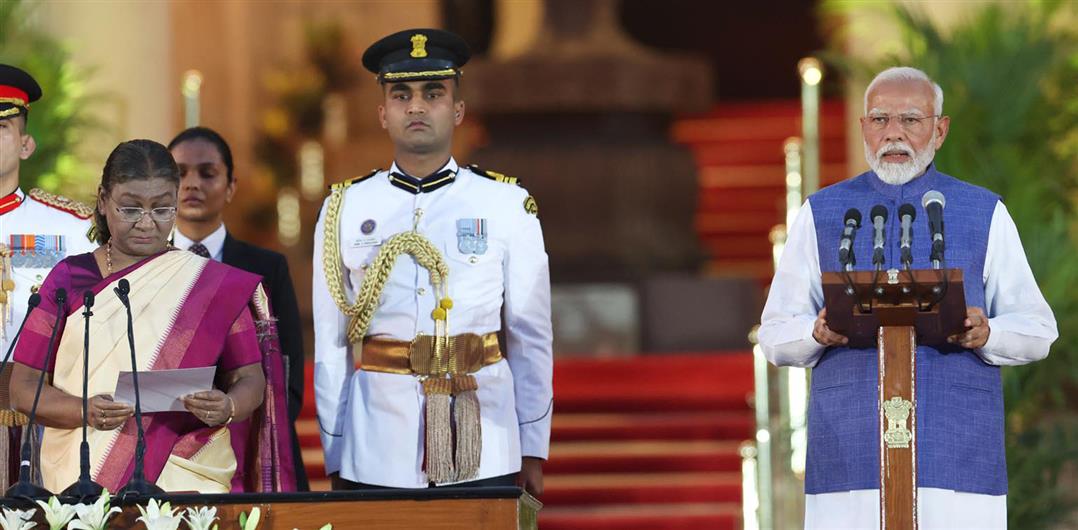


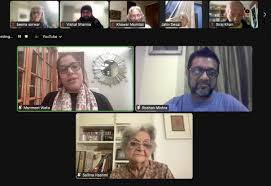


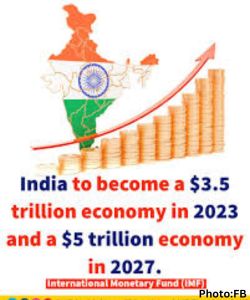
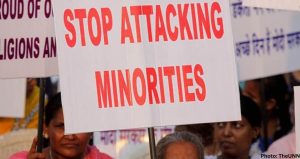
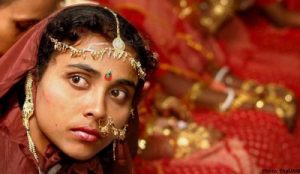
 The recent offensives against the Opposition Party leaders by the Central Bureau of Investigation (CBI) and the Enforcement Directorate (ED) may owe partly to the BJP’s objective of winning the 2024 general election with a much bigger margin, which requires it to “discredit and disunite” its opponents, analysts across India say.
The recent offensives against the Opposition Party leaders by the Central Bureau of Investigation (CBI) and the Enforcement Directorate (ED) may owe partly to the BJP’s objective of winning the 2024 general election with a much bigger margin, which requires it to “discredit and disunite” its opponents, analysts across India say. former Chhattisgarh chief minister Bhupesh Baghel and his associates were accused by the ED of being involved in an illegal online betting case. Baghel was named by the ED days ahead of the state’s assembly polls, which allowed the BJP to carry out a political campaign against the chief minister’s alleged corruption.
former Chhattisgarh chief minister Bhupesh Baghel and his associates were accused by the ED of being involved in an illegal online betting case. Baghel was named by the ED days ahead of the state’s assembly polls, which allowed the BJP to carry out a political campaign against the chief minister’s alleged corruption.